Basketball Rules: A Quick Overview
Everything you need to know to become a basketball pro
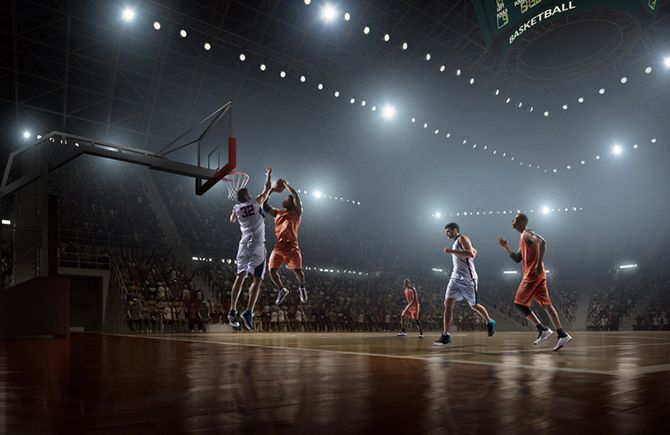
If you are new to the game of basketball, terms like goaltending, backcourt violation or shot clock might be the cause of some confusion. Don't worry, though, we have put together a crash course in the rules of basketball so you no longer have to feel left out of those conversations around the water cooler.
The Basics
A court, two teams, two baskets and a ball - that's all you need. Here, you will learn more about the requirements of a basketball game.
Players
In basketball, there are a total of ten players on the field at the same time, five per team. In addition, a team can have up to seven substitute players with unlimited substitutions.
The starting line-up, also called Starting Five, usually consists of a center, two forwards and two guards. Variations are also possible.
Scoring
The object of basketball is to throw the ball into the opposing team's basket, placed 10 feet (3.05m) above the court on opposite ends of the rectangular court. Free throws are worth 1 point, a field goal is worth 2 points. If the shot is taken from behind the three point line it is worth 3 points. The team with the most points at the end of the game wins.
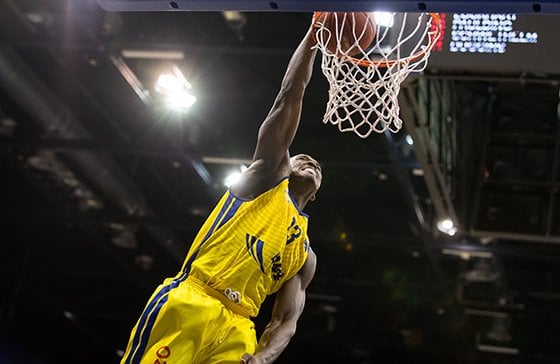
Game length
Under FIBA rules, a game is divided into four quarters, each lasting 10 minutes. In the NBA each quarter lasts 12 minutes. If the game is tied at the end of regulation, overtime periods of 5 minutes are played until a winner is determined.
The most important rules of basketball
Goaltending, dribbling, 8 second rule - lost yet? If you need a refresher on the rules of basketball - fret no more! In this article we will tell you everything you need to know about basketball.
By the way: The rules of basketball may differ slightly from league to league, such as FIBA, NBA or NCAA.
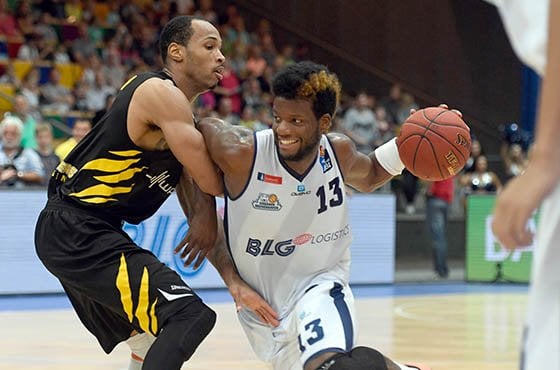
Fouls
In basketball there are four types of fouls:
• Personal foul: irregular contact (defensive foul, offensive foul)
• Technical foul: technical violations and lack of discipline (e.g. disregard of referee decisions, provocation, too many players on the court)
• Unsportsmanlike foul: An unsporting foul is a noncontact technical foul which consists of unfair, unethical, dishonorable conduct or any behavior not in accordance with the spirit of fair play.
• Disqualifying foul: flagrant unsportsmanlike behaviour
Defensive Foul
A defender may only defend against an attacker in possession of the ball to a limited extent. Holding, blocking, kicking, jerking, tripping or obstruction with outstretched arms, elbows or legs are not permitted.
Offensive Foul
An attacker in possession of the ball commits a foul when there is contact with a defender who is either in a legal defensive position or moving backwards. Typical offensive fouls include pushing the defender away with the forearm or elbow contact.
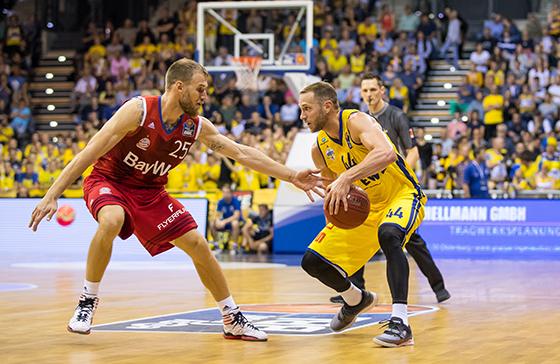
Penalties
After one disqualifying foul or two unsportsmanlike fouls a player is ejected from the game and they have to immediately leave the arena or remain in the locker room until the game is over. A player is no longer allowed to participate in the game when they have accumulated five personal or technical fouls.
Time violations
Basketball is characterized by its fast pace. This is mainly due to the time rules, which specify how long certain actions may last.
24 second shot clock
As soon as the ball enters play, the shot clock starts counting down from 24, which is the maximum amount of time an offensive play is allowed to last. The 24 second shot clock is reset once the ball touches the rim of the basket. It is also reset for ball possession changes, fouls or when a player touches the ball with their foot.
8 second rule
When a team gains possession of the ball, they need to move the ball into the opposing team's half of the court within 8 seconds.
3 second rule
During an attack, the defending players may remain in the opponent's zone for a maximum of three seconds. It does not matter whether they are in possession of the ball or not.
Referees, however, are often generous with this rule and rarely penalise infringements, especially at a high level.
5 second rule
On an inbound pass, a player may only hold on the ball for a maximum of 5 seconds.
In the game, if a player is closely guarded, they must start dribbling, passing the ball or attempting a shot within five seconds.
Upon violation of this rule, an inbound pass is awarded to the oppossing team.
Out-of-bounds
If the ball or the player with the ball touches the ground on or behind the sideline, the ball is out of bounds.
Travelling
As soon as the player in possession of the ball stops dribbling, they can only take two more steps. They then need to either pass the ball or make a shot attempt. The player may lift their pivot leg for a shot attempt but they may no longer touch the ground with that leg unless the ball has left their hands.
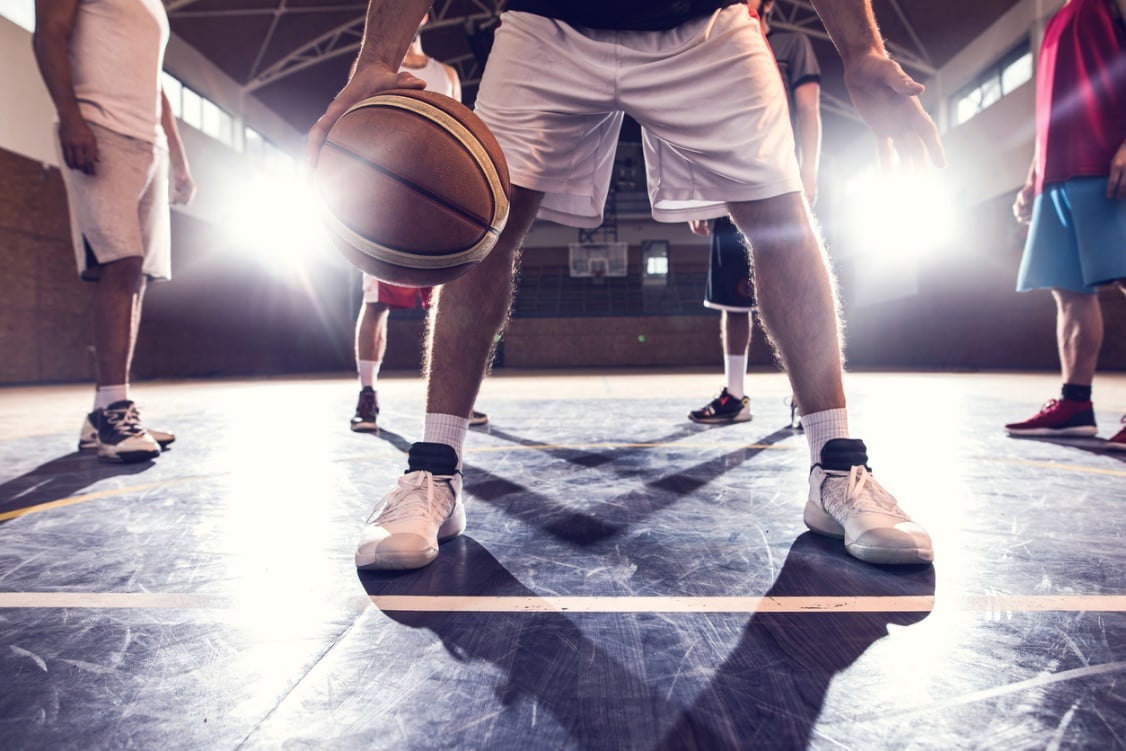
Foot contact
Touching the playing ball with the foot, knee or leg is considered foot contact. A distinction is made between defenders and attackers:
br/>
• When a defender commits foot contact, the shot clock is reset to 14 seconds if more than ten seconds have passed
• When an attacker commits foot contact, the ball is turned over to the oppossing team and the shot clock is reset to 24 seconds.
Backcourt violation
When on offense, no player of the team currently in possession of the ball may pass the ball from the oppossing teams half, the frontcourt, to their own half, the backcourt.
Double dribble
If an attacker picks up the ball after dribbling, he must not start dribbling again. Otherwise, the opponent is awarded an inbound pass from the side line.
Goaltending
If a defensive player interferes with a shot while it's on the way down toward the basket, while it's on the way up toward the basket after having touched the backboard, or while it's in the cylinder above the rim, it's goaltending and the shot counts. If committed by an offensive player, it's a violation and the ball is awarded to the opposing team for a throw-in.
Ready to drain some shots?
Now you have the essential basic knowledge about basketball rules and you’re ready to go – whether you want to dribble across the court yourself or prefer to cheer from the stands.
If you want to look great on the court or while cheering, you’ll find the right basketball products with us – from jerseys to shorts. With our 3D configurator, you can easily design your own personal basketball jersey.
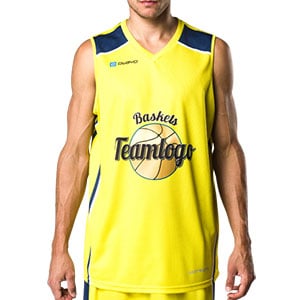
Basketball Jersey B5 Pro Men
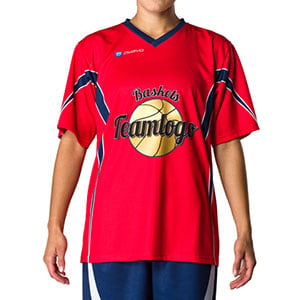
Basketball Shooting Shirt BS5 Pro (Men & Women)

Basketball Shorts BP5 Pro
We wish you lots of fun playing and cheering!
Photo credits: Pictures 1-3; 5: © iStock / Dmytro Aksonov; Picture 4: © iStock /Geber86; Picture 6: © iStock /skynesher.